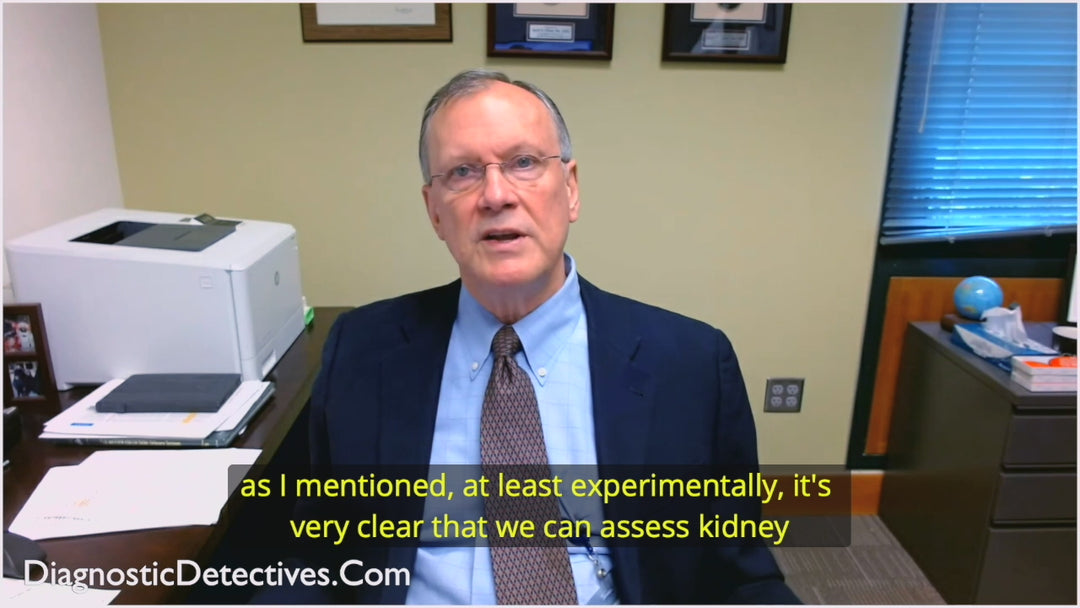Leading expert in urology and prostate cancer diagnosis, Dr. Mark Emberton, MD, explains how multiparametric prostate MRI is revolutionizing the diagnostic pathway by preventing unnecessary biopsies, reducing overdiagnosis of clinically insignificant cancers, and generating massive healthcare savings across Europe and beyond.
Prostate MRI Before Biopsy: A New Standard for Accurate Diagnosis and Cost Savings
Jump To Section
- PSA to MRI: The New Diagnostic Standard
- The European Prostate Cancer Burden
- How MRI Avoids Unnecessary Biopsies
- The Financial Savings of MRI in Prostate Care
- The Problem of Overdiagnosis in Prostate Cancer
- The Future of Prostate Cancer Care with MRI
PSA to MRI: The New Diagnostic Standard
Prostate cancer diagnosis is being transformed by the integration of multiparametric MRI into the clinical pathway. Dr. Mark Emberton, MD, emphasizes that historically, a concerning PSA test result led directly to an invasive prostate biopsy. This linear approach is now outdated. The modern standard places MRI firmly between the PSA test and the decision to perform a biopsy.
This crucial step change allows urologists to make a more informed decision. The MRI provides detailed imaging that answers two critical questions: whether a biopsy is even necessary and, if so, exactly how to target the biopsy for maximum accuracy.
The European Prostate Cancer Burden
The scale of prostate cancer diagnosis in Western medical systems is immense. During his discussion with Dr. Anton Titov, MD, Dr. Mark Emberton, MD, provided striking statistics. In Europe alone, approximately one million men will undergo a prostate biopsy this year.
However, only about 40% of those biopsies will test positive for cancer. This translates to roughly half a million new prostate cancer diagnoses annually across Europe, highlighting the significant number of men who currently undergo an invasive procedure without a cancer diagnosis.
How MRI Avoids Unnecessary Biopsies
A primary benefit of prostate MRI is its power to prevent unnecessary invasive procedures. Dr. Mark Emberton, MD, draws a parallel to breast cancer screening, where a negative mammogram typically means no further immediate intervention is needed. Prostate MRI now offers the same triaging capability.
Dr. Emberton estimates that with a high-quality multiparametric MRI, clinicians could potentially avoid 30% to 40% of all prostate biopsies. This is profoundly important for patient safety and comfort, as a prostate biopsy is an invasive procedure carrying inherent risks, including bleeding and infection.
The Financial Savings of MRI in Prostate Care
The adoption of prostate MRI generates substantial financial savings for healthcare systems. Dr. Mark Emberton, MD, points out that most countries struggle to meet their population's healthcare needs. Diagnostic strategies that keep patients out of unnecessary procedural pathways are therefore highly valuable.
By reducing the number of biopsies performed and preventing the subsequent diagnosis of low-risk cancers that would not have caused harm, MRI has the potential to save "millions of pounds, dollars, or euros." These savings can be redirected to other critical areas of patient care.
The Problem of Overdiagnosis in Prostate Cancer
A critical concept in modern oncology, especially for prostate cancer, is overdiagnosis. Dr. Mark Emberton, MD, explains that not every cancer detected needs to be found. Prostate cancer is extremely common; most men will develop it if they live long enough, but they will not die from it.
Diagnosing a clinically insignificant cancer can lead to a cascade of unnecessary treatments, which themselves can cause physical and psychological harm. It also commits a patient to potentially decades of unnecessary healthcare monitoring and associated costs, which Dr. Emberton estimates could be 10 to 20 years of wasted resources for a single individual.
The Future of Prostate Cancer Care with MRI
The integration of MRI marks a fundamental shift towards more precise and patient-centric prostate cancer care. As Dr. Mark Emberton, MD, outlined for Dr. Anton Titov, MD, this technology empowers urologists to practice smarter medicine. It moves the field away from a one-size-fits-all biopsy approach towards a tailored strategy based on individual risk.
This paradigm not only spares men from invasive procedures but also focuses healthcare resources on diagnosing and treating the cancers that truly matter, ultimately improving outcomes and quality of life for patients.
Full Transcript
Dr. Anton Titov, MD: PSA test must be followed by MRI before prostate biopsy. Multiparametric prostate MRI helps avoid unnecessary biopsy. MRI helps to target biopsy precisely.
In modern times, how many men are usually diagnosed with prostate cancer? Prostate cancer diagnosis in Western countries, in advanced medical systems.
Dr. Mark Emberton, MD: Yes, this year in Europe alone there will be a million men who have prostate biopsy. That doesn't mean they all have prostate cancer. About 40% of men will test positive on biopsy. Some patients will be having biopsies at another time.
So half a million men a year in Europe will be diagnosed with prostate cancer. Now that is obviously set to change.
One of the great things about MRI is that if prostate MRI is negative, we might be able to avoid doing a biopsy, just like if a mammogram is negative in breast cancer screening.
At the moment, there's nothing standing between PSA test and prostate biopsy. It's a linear relationship. If a man is at risk for prostate cancer, all we can do is biopsy.
Prostate MRI sits between the PSA test and biopsy. Multiparametric prostate MRI will tell us whether to biopsy, and how to biopsy prostate gland.
The question of "whether to biopsy" is important. It might be that with good MRI we might be able to avoid 30–40% of unnecessary prostate biopsies.
Dr. Anton Titov, MD: This is very important because prostate biopsy is an invasive procedure. It has its own risks, as any invasive medical intervention.
Dr. Mark Emberton, MD: Correct! MRI of prostate will then add to the financial savings that many countries need. Most countries are struggling to meet the healthcare needs of their population.
Interventions that actually keep people out of the medical system allow us to do less expensive diagnostic procedures. MRI of prostate often results in fewer unnecessary diagnoses.
Prostate MRI has the potential to save millions of pounds, dollars, or euros. Overdiagnosis is a difficult concept in cancer. Everybody thinks that all cancer needs to be found.
But in prostate cancer, because it's so common, not all cancer has to be found. Most men will get prostate cancer if they live long enough, but they will not die of it.
Not all prostate cancers are destined to cause a problem. So you can avoid diagnosing men with prostate cancer who don't need to be diagnosed.
Then you can save maybe 10–20 years of healthcare costs that would have been used up, wasted on that individual. Unnecessary cancer treatment may have even actually caused harm.







